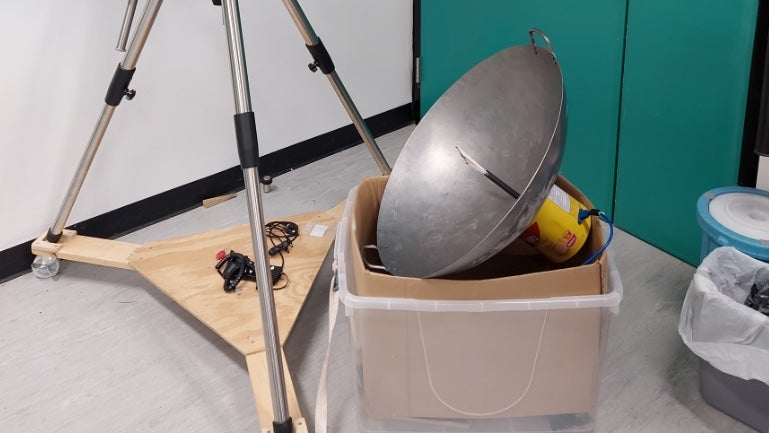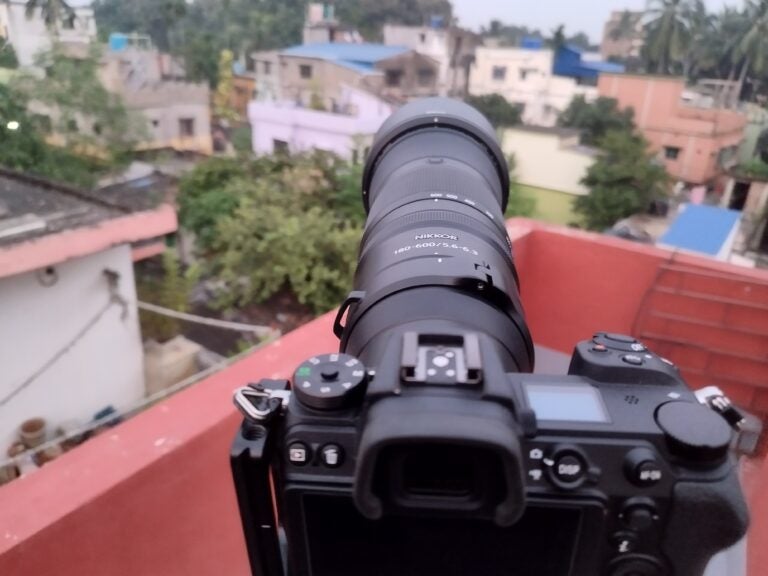
Want to explore the stars but can’t due to heavily light-polluted skies? A team of astronomers based at Hong Kong University of Science and Technology has a solution for you. Instead of trying to capture visible light, they suggest going for radio waves – and they’ve outlined a particularly interesting way to do it.
With a home-built setup consisting of cheap electronics and a simple kitchen wok, you can capture real astronomical data, measuring the speed of neutral hydrogen present throughout our Milky Way. And if you’re lucky, you can even collect evidence of dark matter, too.
A paper detailing the design and capabilities of the DIY radio telescope was recently submitted to the preprint site arXiv.org,
Explore the sky in radio waves
Radio telescopes, invented in the first few decades of the 20th century, have many advantages over traditional optical telescopes. For one, radio telescopes require far less precision, are less complicated, and they don’t require expensive optics.
A decent hobbyist telescope built for observing visual light may cost somewhere in the ballpark of $1,000 dollars. Meanwhile, radio telescopes are far less expensive because they are basically just bits of metal bent into useful shapes.
Additionally, good observations with optical telescopes require clear, non-light-polluted skies located far from cities. But a huge number of people live in cities, often making amateur astronomy the province of the wealthy and mobile, available only to those with access to the darkest of skies.
Another advantage of radio telescopes is that, while humans certainly have a propensity for generating lots of radio emissions, those human-made emissions are very different from the radio emissions produced by cosmic objects and phenomena. That means human-caused radio noise is relatively easy to filter out using simple digital processing techniques, which is not always the case for visual light pollution.
A unique approach to backyard radio astronomy
The advantages above are the basic rationale behind the Wok for Hydrogen (WTH) instrument developed by the astronomers at the Hong Kong University of Science and Technology, who are located in one of the most densely populated cities on the planet. The core component of this do-it-yourself radio telescope is a run-of-the-mill kitchen wok.
While other teams have proposed at-home radio astronomy kits using leftover satellite dishes, it turns out that woks have just the right curvature to target a specific frequency of radio emissions, right around 1,420 megahertz (MHz). This also happens to be the frequency of radio waves emitted by neutral hydrogen atoms when their electrons flip their spin orientation.
This so-called 21-cm line is a relatively feeble signal. But since hydrogen is the dominant element throughout the cosmos, a galaxy like the Milky Way contains copious amounts of neutral hydrogen. That means you can rather easily pick up the signal, even when contending with the abundant radio noise found in the most congested of cities.
Build your own radio telescope
The WTH radio telescope is straightforward to build. You start with a kitchen wok, which serves as the collecting dish. Then you take copper wire and bend it in a specific configuration, as detailed in the paper. This copper wire becomes the receiver antenna that is used to capture the radio waves.
You do have to outsource the next two parts, a signal amplifier and a digital processor. But you can easily find both online, and you shouldn’t need to spend more than $100 on them.
And that’s it. That’s the complete telescope setup. The digital processor can plug into any computer, and there’s free software available to analyze the output. The total cost of the system is less than $150, which is about an order of magnitude less than the cost of a comparable optical telescope setup.

Targeting neutral hydrogen with WTH
The researchers tested the WTH telescope (which they placed in a plastic tub with wheels for extra mobility) at their university, not far from the downtown center of Hong Kong. They pointed the telescope at various regions of the sky and showed they were able to detect the emissions of neutral hydrogen.
However, the signal they detected wasn’t exactly at 1,420 MHz. Instead, it was shifted to slightly higher frequencies. This, the researchers explain, is caused by the motion of the nearest spiral arm of the Milky Way toward us, which blueshifts the radiation to a higher frequency.
By pointing the telescope in different directions at different times of the year, you too can use your own WTH setup to measure the movement of neutral hydrogen gas throughout the Milky Way, making it the perfect project for an astronomy hobbyist or club.
The researchers also point out that if you head away from light-polluted skies, you can achieve something even cooler. With enough sensitivity, you can measure the motion of neutral hydrogen at different depths within the Milky Way, which can be used to build a 3D map of the rotation of gas throughout our galaxy.
But keep in mind, that rotation speed should be higher than what you would expect considering only the combined gravity of all the normal, light-emitting matter within our galaxy. And wouldn’t you know it, that discrepancy is one of the key pieces of evidence for the existence of dark matter.
It’s hard to believe how much knowledge we can learn about the universe with even the most basic of tools – including a simple kitchen wok.









